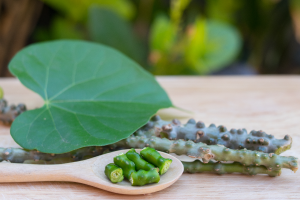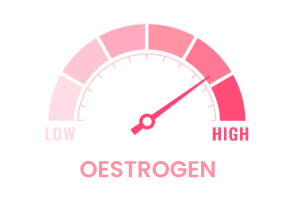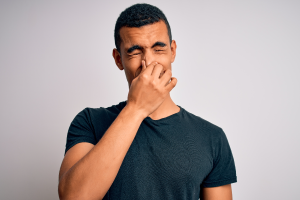

More than 50% of people are into the habit of knuckle cracking. For most, it is just an unconscious, absent-minded practice. But there is a lot of debate about whether the habit is harmless or does it lead to bigger, deeper health issues. Cracking fingers is marked as a practice of stretching, bending or pulling finger bones backwards and forward to produce a typical ‘cracking’ sound. The act is believed to be a way to deal with nervous energy and thus helps release tension. But over time, it develops as an unconscious habit.
Let’s understand what leads to this ‘cracking’ sound after all.
What Causes the Cracking Sound?
Synovial fluid, the fluid that lubricates the joints, tends to develop nitrogen bubbles from time to time. The act of stretching, bending, or pulling the finger joints increases the space between the bone joints and causes these gas bubbles to burst. Thus, cracked fingertips causes the typical ‘pop’ sound.
As it takes some time for the gas bubble to form again, it explains why one cannot crack the same knuckle twice right away.
Why Do People Crack Knuckles?
More than 50% of people are hooked on the habit. But what causes people to develop the habit? The key reasons include:
- The interesting sound – Most people admit that they like to crack fingers because of the sound it produces.
- How it feels – Cracked fingertips causes the gas bubbles to burst. This creates more room for the joints and is believed to relieve tension and increase the mobility of the joint.
- Tackling Nervousness – Fidgeting with things is often considered a method to counter nervousness. Cracking fingers thus becomes an unconscious act during nervous times.
- Stress Reliever – Just like nail biting is associated with stress and anxiety, cracking fingers too is considered a stress reliever during stressful moments.
Is the Habit of Cracking Fingers Harmful?
Numerous research works suggest that the habit is not harmful. Interestingly, it is not beneficial either. Experts feel that cracking of knuckles causes no potential damage or harm to the joints till the time the act is pain-free. On the other hand, in the case of painful cracked fingertips, repetitive practice can worsen the damage to the surrounding tissue that causes pain.
However, in no case does knuckle cracking lead to arthritis.
Cracking Knuckles Side-Effects
Unless painful, cracking knuckles is considered to be a harmless practice. Also, if done gently and without exerting much pressure, things are believed to remain problem-free. But chronic knuckle cracking is still associated with few side-effects. These include:
- Damaged Cartilage – Chronic knuckle cracking can cause the cartilage in the joints to wear away. Also, the cartilage may accidentally break off. This can lead to painful cracked fingertips, swelling or distorted joints.
- Dislodging of Joints – Although it’s not easy and seems impossible, pulling or moving the finger joints very harshly to make them crack can pull the finger out of the joint. It can also damage the surrounding ligament tissue.
- Painful and Swollen Joints – While the practice of cracking fingers is generally painless, painful or swollen joints during knuckle cracking indicates an underlying medical condition like arthritis or gout.
Tips to Quit Cracking Fingers
Cracking your knuckles is not medically harmful. But doing it publically can be quite annoying and distracting for other people around. If you are amongst the ones who wish to quit this habit, here are a few tips that can help:
- Be mindful and aware of each time you crack your knuckles. Try to stop consciously.
- Identify the reason why you crack your knuckles and address the underlying problem.
- If you practise it for stress relieving, try out other methods like deep breathing, exercise, or meditation.
- If you practise it out of anxiety, keep a fidgeting toy handy to avoid cracking fingers.
- During times when you are most likely to crack your knuckles, keep your hands occupied to avoid fidgeting and cracking fingers.
- Remain active and move more. If your hands are constantly busy doing important jobs, the urge to crack fingers reduces automatically.
- Practise gentle stretching to move the synovial fluid around and lubricate your finger joints well.
When to See a Doctor
As long as the habit is not painful, it requires no medical attention. However, in case the finger joints begin to pain, swell, or there is a change in the joint shape, it is important to consult a doctor. Evaluation by an orthopaedic doctor will help figure out the exact reason behind the problem.
Conclusion
Cracking fingers is a common habit. Over 50% of people are into the habit of cracking knuckles. The stretching, bending, or pulling of finger bones causes the nitrogen gas bubbles in the ligament fluid to burst. This causes the cracking sound. Research suggests that cracking fingers is not a harmful habit. It offers a range of psychological benefits like relieving stress, increasing joint mobility, and more.
However, doing it incorrectly, harshly, or too frequently can trigger medical concerns. Cracking fingers side effects include ligament damage, dislocated joints, or painful and swollen finger joints. However, these are often linked to chronic finger cracking. Thus quitting the habit is often recommended. For breaking the habit, being aware of when you’re doing it and why you’re doing it is the key. This will help design customised strategies to quit finger cracking.
Frequently Asked Questions About Cracking Fingers
Q. Why should we not crack our fingers?
While it is OK to crack your fingers, cracking fingers incorrectly or harshly can cause joint dislocation or ligament injury.
Q. Is it fine if we crack our fingers a lot?
Although cracking fingers is invariably considered harmless, chronic knuckle cracking is associated with a few side effects like painful and swollen joints, damaged cartilage, and reduced grip strength in later life. So it is probably better not to crack your fingers too much.
Q. What is considered to be finger cracking?
Knuckle cracking is an unconscious act of stretching, bending or pulling finger bones backwards and forward to produce the typical ‘popping’ sound. Synovial fluid, the fluid that lubricates the joints develops nitrogen bubbles from time to time. The pulling and stretching of the fingers cause these gas bubbles to burst. This produces a cracking sound.
Q. Is there a benefit of cracking fingers?
The practice of finger cracking is linked to several psychological advantages. It is believed to be a way to deal with nervous energy. It helps release tension. For some people, the act of cracking fingers is believed to make more room in the joint, which increases joint mobility.




